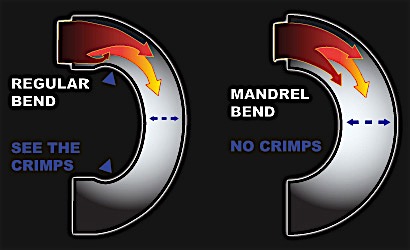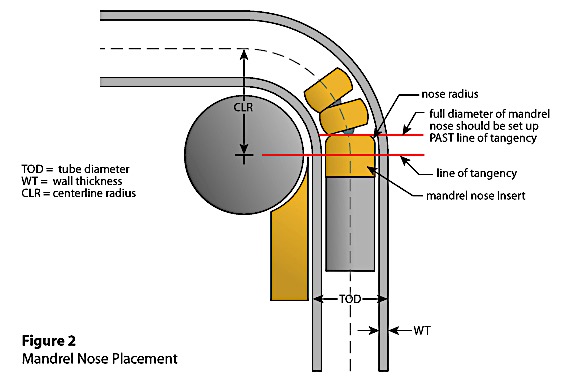 In this video from the folks at Burns Stainless, technical director Vince Roman discusses the benefits of mandrel-bent tubing and the manufacturing processes behind the construction. This technique is the preferred method of bending exhaust, as it allows the exhaust flow to travel through the tubing uninterrupted, and results in smooth engine performance.
In this video from the folks at Burns Stainless, technical director Vince Roman discusses the benefits of mandrel-bent tubing and the manufacturing processes behind the construction. This technique is the preferred method of bending exhaust, as it allows the exhaust flow to travel through the tubing uninterrupted, and results in smooth engine performance.
A mandrel bend is when a tube is bent on a machine that utilizes a mandrel, preventing the tube from collapsing under the stresses of the bend. The key components are the mandrel, clamp die, pressure die, wiper die, and bend die.
To achieve preferred results, the tube is slid over the mandrel — a segmented, articulating tube that conforms the interior of the tubing — and is clamped between the wiper and bend die by the clamp and pressure dies. As the bend die rotates, the pressure die secures the tube against the bend die, while the mandrel remains inside the tube, thereby preserving the cross-section.
 A general muffler shop would utilize a press bender that doesn’t support the interior of the pipe while its bent. As the pipe is bent using this machine it crushes the pipe, causing the cross-section of the tube to ovalize, or collapse, and lose flow area, which will cause a flow resistance in the pipe. It’s difficult to fabricate utilizing this type of bend considering that the interior diameter of the pipe isn’t consistent from angle to angle, or bend to bend.
A general muffler shop would utilize a press bender that doesn’t support the interior of the pipe while its bent. As the pipe is bent using this machine it crushes the pipe, causing the cross-section of the tube to ovalize, or collapse, and lose flow area, which will cause a flow resistance in the pipe. It’s difficult to fabricate utilizing this type of bend considering that the interior diameter of the pipe isn’t consistent from angle to angle, or bend to bend.
Burns Stainless stocks a wide range of mandrel bends in three different material combinations: 304 stainless-steel, 321 stainless-steel, and 6061 aluminum. The tube diameter, wall thickness, and centerline radius are all important factors when designing and building exhaust and intake plumbing, and is also reflected in Burns’ part numbers.
Check out Burns Stainless in the source box below to find out more. With their expertise, you’re sure to get the most out of your engine exhaust cycles.

















